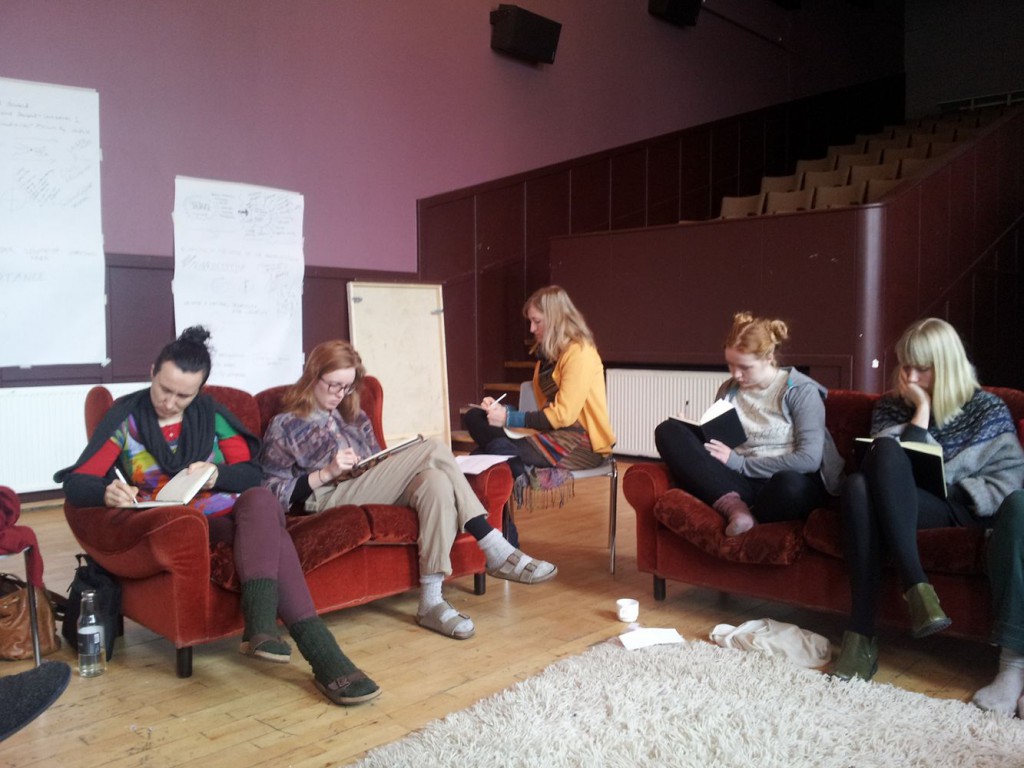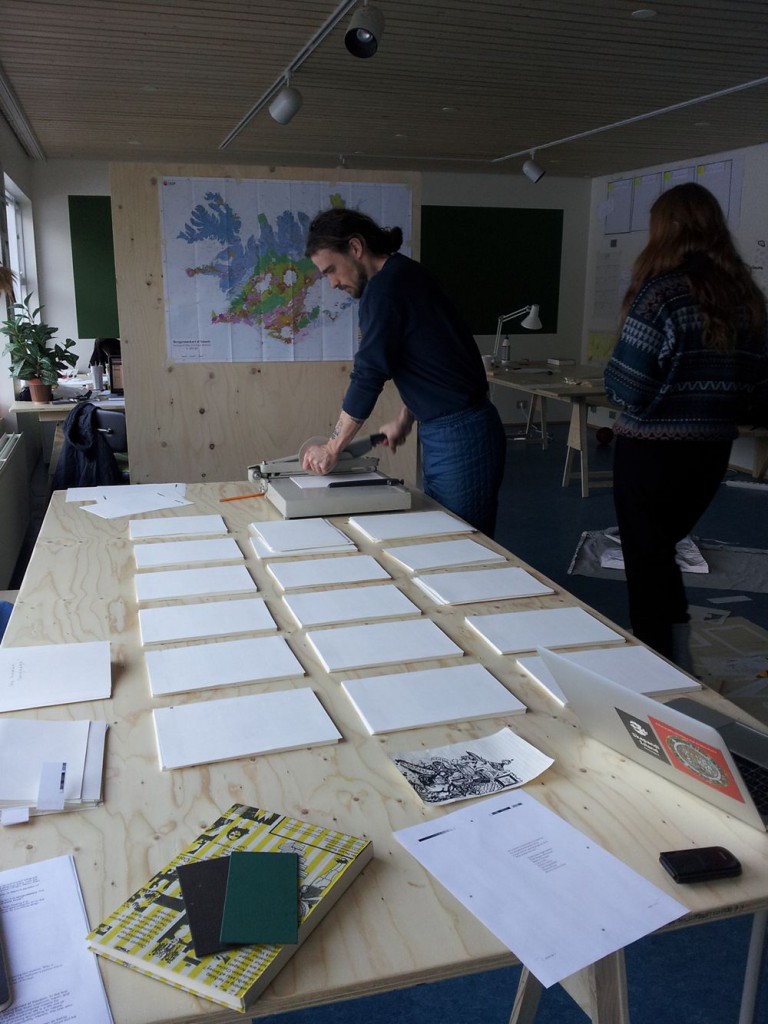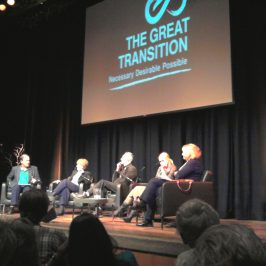Back in January Jonatan Spejlborg got in touch and invited me to co-design a week-long course for LungA, a school which he co-founded in Seyðisfjörður, Iceland, a couple of years ago. LungA School is based on the model of the Danish Folkehøjskole and grew out of an art festival which has been running in Seyðisfjörður since 2000. During a twelve week semester the students explore different forms of expression and creative means together with the teachers and the guest artists who come for a week at a time to give workshops and lectures.
When Jonatan told me that the school was founded to cultivate wildness, courage and honesty in the students, I was all ears. Over the next months we prepared to take the students on a journey into a space between stories to see what we found there. We got really excited in the process of planning the week as this was an opportunity to explore in practice different aspects of the cultural narratives which we have both been thinking about in the last couple of years.
On the evening of our arrival Vanessa and I were greeted by Jonatan in Egilsstaðir airport and we drove across the mountain in the twilight to the small village of Seyðisfjörður. The hour between night and day is called the blue hour here and for a good reason: the sky and the snowy landscape create a strange sensation of traveling through a world where there are no other colours than blue, giving rise to the surreal sensation of being neither quite awake nor asleep.
 As we crossed the mountain strong winds enveloped the car in snow and we had to make the passage to Seyðisfjörður through what felt like a blizzard whitening out the car windows. When we arrived in the local Dieter Roth inspired cafe it felt like we had been transported to another world. The students and other teachers gave us a warm welcome. They had just finished an intense week of creating an exhibition called “Origins” made with Ethiopean mud, sheeps’ blood, tar and chalk. When we saw northern lights later that evening I thought that there could be no better place to do a course about the power of stories and finding ways to discover and live in the questions that make a life.
As we crossed the mountain strong winds enveloped the car in snow and we had to make the passage to Seyðisfjörður through what felt like a blizzard whitening out the car windows. When we arrived in the local Dieter Roth inspired cafe it felt like we had been transported to another world. The students and other teachers gave us a warm welcome. They had just finished an intense week of creating an exhibition called “Origins” made with Ethiopean mud, sheeps’ blood, tar and chalk. When we saw northern lights later that evening I thought that there could be no better place to do a course about the power of stories and finding ways to discover and live in the questions that make a life.
We had the weekend to settle in and look around. Seyðisfjörður is a beautiful little town situated between mountains in a fjord on east Iceland. As it had just been snowing a whole lot it reminded me a lot of being in Greenland. It looked like this:
On Monday the course began. It was structured around the production of a book. We held a seminar each morning in which I gave the students different kinds of input and then the afternoons were for the students to process that input and express it in their own way. They each had to work with a new format every day: textual and visual output, documentation of the day and free form. The last day we worked on creating our own maps based on the questions we had worked with in the course of the week.
The themes for the different days where designed as a journey deeper into the space between stories in order to create personal tools and ways of responding to the uncertainty of being without an orderly narrative about where life is going. Each day was a new chapter in our book and was centered around different types of questions.
Monday we explored “The Stories that Make Reality” and the questions: What is the role of cultural myths, meta-narratives and metaphors in our experience of reality? Which myths have shaped the way we understand ourselves and society? How do these stories affect the way we live our lives? And what kind of futures do they create for us?
Tuesday we looked into “The Ruins of a Future that Never Was”: What happens when our cultural myths fail? Can we currently see a failure of historical narratives in the world around us? How do we experience this failure on a personal level? How can we respond to such failures?
Wednesday we entered the space between stories and considered ways of “Breaking the Double Bind”: How do we begin to think and act in ways that don’t reproduce the plots and relationships of the myths that are failing? Is it possible to find new ways of thinking when many of our concepts come from the vocabulary of the old story? How do we build a shared language that supports new ways of being in the world?
Thursday we asked how to become good at “Navigating Uncertainty”: If the future is radically uncertain how do we live our lives in meaningful ways that help us to grow rather than to close ourselves off from the world? What are the values we would like to flourish in the future? How do we stay connected in a society where it is sometimes hard to find community?
Friday was the day for “Journeying On”: How do we create new opportunities to lead flourishing lives in a ‘broken’ future? How can we actively make contact with the futures we want but which still lie just beyond our personal horizon? How can we know that we are on the right path in life?




The seminars were a mix of input from my work, group reflections and exercises. On Wednesday we held a ritual called the “Truth Mandala” based on one of Joanna Macy’s activities from the Work That Reconnects. It turned out to be a powerful experience as reflected in a lot of the output from that day. The students were amazing to work with, they engaged sincerely with all the material and were able to work with it in imaginative ways. It felt like a privilege to work with a group who were so resourceful both in their reflections and their creative work.
Every evening they handed in new pages for the book which was then edited, copied and collated into a chapter for the book by the master bookbinder.
By Friday we afternoon we had made a book! The students organised a book launch and we invited the people of Seyðisfjörður to come and see what we had been doing all week.
Here is a sample of some of the material that went into the book:
The school’s production team have put together a video diary of the week which gives a flavour of the atmosphere up there:
It was fantastic to get the opportunity to create a week-long course on how to navigate the uncertainty that arises from the failure of progress as a cultural narrative, and I was heartened to see that the ideas were absorbed so readily and generated such perceptive output. The Lunga School is a vibrant place with a wonderful energy owing not least to the people who have sought out this beautiful corner of the world. I’m grateful to Jonatan for suggesting to do this course together and hope to get a chance to go back up there some day.
Foreword
In the winter in Seyðisfjörður the twilight creates the peculiar experience of being enveloped in ever shifting shades of blue. This time between night and day is known as the blue hour, an hour where the colour of the town and the mountains fade and they instead reflect the sky above. In the blue hour Seyðisfjörður is neither quite awake or asleep, and the shape and shade of the world shift slightly. In this liminal space between night and day it is sometimes possible to glimpse the contours of a different reality which lies beyond but is held within the everyday.
It is this space that we have sought out during the week it took us to produce this book: a space of transformation where the stories that shape our lives can take a new form. We have worked from the idea that reality is storied and that by getting to know the stories we are living by it is possible to become active narrators of our lives. We have tried to enter a space between stories where we let go of the cultural narratives that cast us as consumers in a brave new world of progress, and where questions are more important than answers.
During five days we explored different aspects of questions like: What is the role of cultural myths and metaphors in shaping our experience of reality? What kind of futures do they create for us? What happens when our cultural myths fail? How can we respond to such failures? How do we begin to think and act in ways that don’t reproduce the plots and relationships of the myths that are failing? What values would we like to take with us into the future? How can we actively make contact with the futures we want but which still lie just beyond our personal horizon?
The pages you are about to read represent the first steps in the journey of inquiring into such questions. Each day we examined a new theme in relation to storying and the title of each chapter reflects topics we discussed and worked through in the morning seminar. In the afternoon the students were free to interpret and express this input in whatever way they felt compelled and what you see in this book is the result. There were four set modes of expression: textual reflection, visualisation, documentation and free form. Each student had to engage with all of these over the first four days, and the fifth day was spent making the maps you see in Chapter 5.
It has been nothing short of wonderful to witness the kind of attitude the students brought to this work. They have naturally entered the ‘space between stories’ with patience and curiosity and they have worked intensely to produce the output presented here. And what we are standing with here is a manifestation of the places in the imagination we have visited collectively during a week of intensive story work and it stands as roadsign on a much longer journey of questioning and creating the stories that make a life.
The week has been a genuine experiment in meaning-making and we hope that the work with this book has brought both clarity and confusion.
Jeppe Graugaard & Jonatan Spejlborg
Seyðisfjörður, March 2015
















Leave a Reply